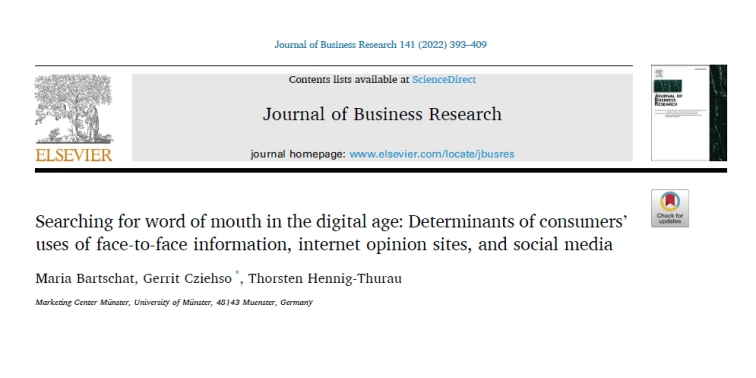(E)WOM to the Rescue! When Do We Consult Which Word-of-Mouth Channel to Buy the Best Product?

Münster’s marketing scholars have added one more piece to the EWOM puzzle: Almost 20 years after MCM Professor Thorsten Hennig-Thurau published what became the seminal study on consumer articulations about products and services on the internet, a team of scholars from the Marketing Center Münster has shed more light on what can be easily considered the most powerful information source in today’s digital market environment.
Together with Dr. Maria Bartschat, a former doctoral student at the Chair for Marketing & Media, Assistant Professor Gerrit Cziehso and Professor Thorsten Hennig-Thurau have studied how people allocate their search efforts across what are today’s three main word-of-mouth channels: face-to-face communication with other consumers, product reviews published on internet sites such as Amazon, and recommendations on social media platforms. Their work, based on representative German data involving more than 2,000 consumers, was recently accepted by the Journal of Business Research.
The Münster scholar team find that several product and consumer characteristics have systematic effects on search effort allocation, as do consumers’ word-of-mouth-specific resources have. Their results also show that the WOM channels take different roles of during customers’ search journeys: whereas face-to-face conversations and internet opinion sites tend to be consulted early in the shopping process, social media is mostly consulted shortly before the final decision is made. Their findings help managers to gain a rich understanding of how consumers make use of different word-of-mouth types and provide a sort of road map for practitioners managing word of mouth.
The article can be freely accessed here. (open access)

